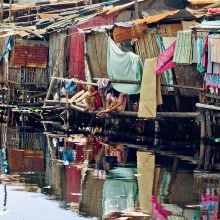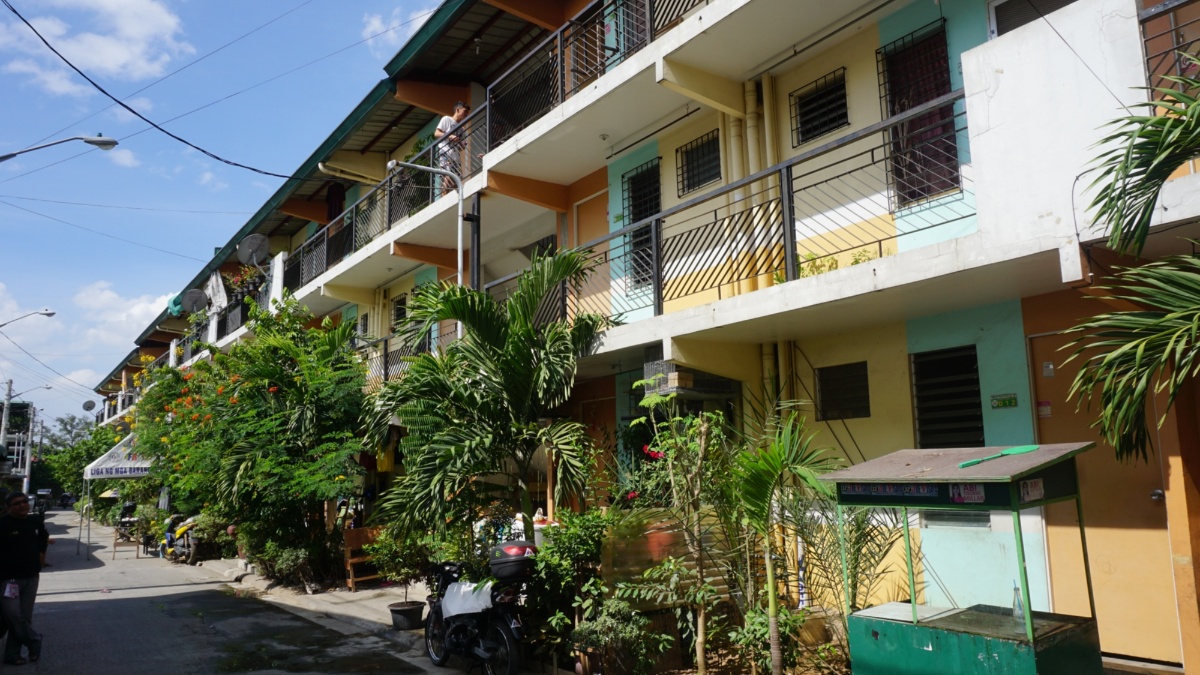Theresa Peralta comes from a poor neighborhood in the center of the Philippine capital Manila, directly on the Manila Bay coast. Whenever one of the numerous typhoons was brewing over the archipelago in the Pacific, she prayed with fear with her neighbors and piled up sandbags. But, again and again, the heavy rain caused her dwelling to be destroyed in torrential floods.
Theresa Peralta is not her real name, but her example is one of many. An estimated three million people in the Manila metropolitan region live in precarious conditions in informal, often slum-like settlements. These settlements are often located in danger zones, which, in terms of risk avoidance, should actually not be built on at all. When the annual monsoon comes with its constant lashing rain, or one of the 20 or so typhoons that hit the region every year, people are practically unprotected against the masses of water. Already today, informal settlers and homeless people make up the majority of fatalities during natural disasters. If climate change causes sea levels to rise, monsoon rains to become heavier, and typhoons to become more frequent, these people will be even more at risk.
500,000 people are to be resettled
In principle, there are two approaches to countering these threats: upgrading informal settlements, or relocating vulnerable residents or entire settlements. The latter has a long tradition in the Philippines. However, while so-called post-disaster resettlement has been the focus of political activities to date, the government in Manila is planning to preemptively assign 100,000 families a new home in a safe area in view of climate change. Approximately 500,000 persons are affected - Theresa Peralta, too, is one of them. She’s now living in a newly developed quarter, which is a flagship project. The Filipina is content with her small, simple apartment and appreciates the convenience of electricity and running water, and is happy that her fears have disappeared. But people do not always feel better after relocating to a new home.
Significant social and economic consequences
“Resettlement is, first of all, the best solution from the authorities’ point of view. For the people, however, moving to a safe place also means displacement from their dwellings, from their previous living environment, and ultimately from their homes,” Hannes Lauer explains. “This has significant and, in some cases, also very diverse social and socioeconomic consequences.” The doctoral student is doing his research at the Institute of Regional Development Planning (IREUS) within the framework of the project “LIRLAP” (Linking Disaster Risk Governance and Land-Use Planning), which involves - besides the University of Stuttgart - the Technical University of Dortmund, the Ludwig Maximilian University of Munich, the University of the Philippines as well as partners from Thailand and Vietnam. IREUS researches the sustainability of the resettlement strategy, asking in particular whether people are actually less vulnerable in the new locations and whether they really have a chance to lead a “better life”.
For this purpose, the researchers examine various types of rehousing in terms of construction and organization: Newly developed housing on the outskirts of the city, inner-city cooperatives, high-rise buildings, townhouses, and more. “Through household surveys, statistical analysis, and interviews, we aim to determine the impact of different types of resettlement and to find out which approaches lead to greater resilience,” explains Lauer about his research project. “Together with the partners, we then want to run gaming simulations of what an ideal resettlement looks like and design two ideal types of settlement from this.” One of these is supposed to be located in the central part of a city and make ideal use of limited high-density land. The other is intended to be a so-called off-city settlement to demonstrate that a new perspective on life is also possible in peripheral locations. The focus in both ideal types of settlement is also on adequate participation of the people who are to be resettled.
Hope for a field phase in the Philippines
The researchers’ vision goes one step further. “Our long-term goal is to accompany a resettlement that is focused on sustainability and resilience as a pilot project,” says Prof. Jörn Birkmann, who leads the project on the part of IREUS and supervises Hannes Lauer’s doctoral degree studies. However, there is still a long way to go until then. Lauer and Birkmann were able to get a first impression during a preliminary examination in the Philippines in 2019. But, like so much else, further research was relegated to the digital realm by the corona pandemic - including a workshop series with partners in Bangkok, Hanoi, and Manila. Now the researchers hope to start the field phase with pretests in Manila this October and conduct household surveys in 2022 as planned. The project’s field phases in Thailand and Vietnam will take place in 2023.
Hannes Lauer will be presenting his research in a keynote speech at the kick-off event of the Green Office on June 24, 2021.
Then, Hannes Lauer would probably have the time after his doctoral degree studies in mind. “I’m interested in the many and highly context-specific effects of climate change on ecosystems and societies. We will all have to deal with climatic changes, but it will be most difficult for people whose lives are already precarious,” he says. “It’s precisely this combination of natural changes and social processes that I want to explore further and work on - in research or in practice.”
Series “Specialized in Sustainability”
The series “Specialized in Sustainability” presents research conducted by early career researchers about sustainability at the University of Stuttgart. Research by doctoral students and research associates from various institutes encompasses everything from structural-physical analyses of tree houses to development studies in the Philippines, to lithium battery alternatives. The various disciplines are united by one common goal: researching to ensure an environmentally friendly, sustainable future.









